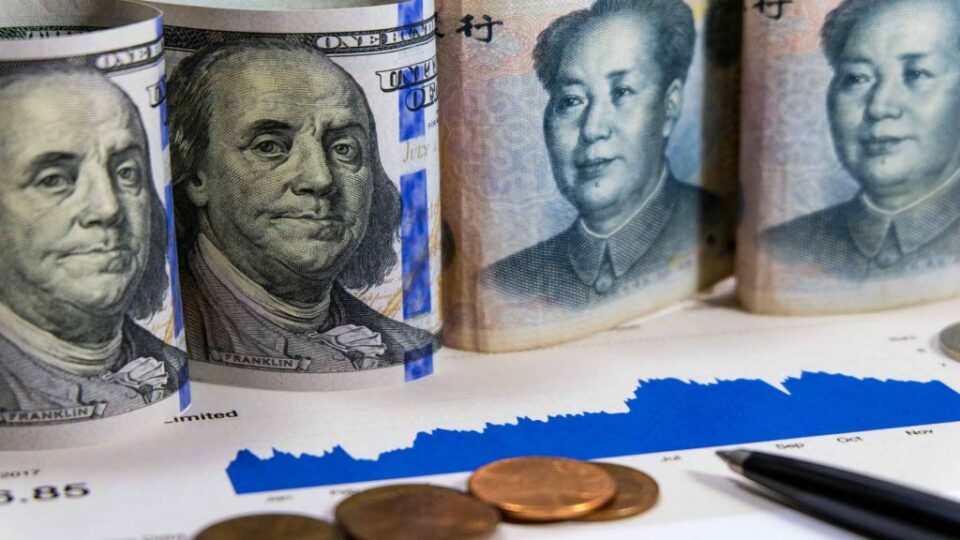Should the Fed pay attention to the IMF’s warnings about global financial risks and deteriorating market conditions? Probably, but more red-hot inflation data means their hands are tied.
Key Takeaways:
- The Fed has little choice but to continue raising rates until something breaks.
- International markets and central bank policies are correlated like never before. When one nation falls, they all fall.
- Gold might be the only asset that remains independent from the global empire of risk.
IMF (In)Stability Report
On Tuesday, the International Monetary Fund released its Global Financial Stability Report. Or rather, its instability report.
The IMF warned about acute risks stemming from the European energy crisis, the war in Ukraine, emerging market debt distress, climate, Chinese property markets, skyrocketing interest rates, and of course, global inflation.
Perhaps most concerning was their warning about deteriorating market liquidity. When markets are liquid, economic participants can easily buy and sell assets. When liquidity deteriorates, asset values plunge.
Since 2008, policies of ultra-cheap credit have pumped artificial air into the burgeoning “everything bubble,” leaving a legacy of instability that we must now confront. According to the IMF, we have only seen the current level of financial risk twice in recent history: the Global Financial Crisis and the COVID-19 crash.
Fed Sticking to Its Guns
Despite these warnings, the Fed appears dead-set on sticking to its streak of monetary tightening.
Policymakers have little choice. Consumer inflation data exceeded expectations again last month, rising 8.2% from the year earlier. Food and rent continue to surge, along with consumer services such as physicians’ visits. Producer inflation also shows no signs of reprieve, meaning pressure on consumer prices will likely remain strong in the coming months.
Stock Correlation
It is helpful to look at modern markets through the lens of correlation.
According to the Wall Street Journal, the S&P 500’s one-month realized correlation is near 65% (100% means all stocks are moving completely in lockstep). We basically only see this level of correlation during times of extreme fear.
Correlation is great on the way up, but not so great on the way down. Easy money policies over recent decades made stocks essentially “risk-free.” Every time stocks hit a rough patch, the Fed stepped in with more free money, usually in the form of quantitative easing, to support the market.
Conventional advice recommends that investors just “buy the market.” A low-cost ETF that tracks the entire stock market should do just fine over the long term. A hundred years of stock market data support this strategy. When investors buy, they buy everything. When investors sell, they sell everything.
Bonds, commodities, and real estate are all caught up in this year’s stock collapse. Market participants are finding it increasingly difficult to find a place to hide…unless they happen to be a politician with insider information and questionable ethics.
The Global Empire of Risk
The correlation problem goes beyond the stock market. Decades of globalization have united the international economy like never before. The benefits of global trade are obvious: bolstering developing economies, encouraging political unity, and opening access to international goods and services, to name a few.
Throughout the course of human history, brimming with violence, oppression, and division, economics has been one of the strongest uniting factors. In the first century A.D., enemies of Rome were happy to use Roman coins as a medium of exchange. When religion, politics, and culture failed to unite nations, money was certain to do the trick.
Today’s globalization manifests itself in central bank policy. Every nation has a different central bank, yet all central banks have nearly identical charters. When the Federal Reserve balloons asset prices by suppressing interest rates, the rest of the world follows suit. When the Fed bursts the bubble by jacking up interest rates, every other nation is forced to do the same.
Economic division is helpful in one regard: keeping financial disasters domestic. Black Monday (1987) and the Great Financial Crisis (2007-2009) proved we no longer have that luxury.
China’s problems are Saudi Arabia’s problems. Ukraine’s problems are Japan’s problems. Everyone’s problems are our problems.
Hedging Instability
If any asset remains independent from the global empire of risk, it is gold.
Gold is free from counterparty risk. The metal does not derive its value from someone else’s debt, such as bonds. It does not derive its value from a company’s growth prospects and business decisions, such as stocks.
Gold’s value is intrinsic.
The price of gold will not necessarily skyrocket when disaster strikes; however, history has proven its resilience in the face of risk. Whatever lies in our path, be it inflation, deflation, or some nasty combination of both, history tells us that gold adds an essential layer of financial protection.
Secure gold savings, without the excessive fees
Your weekly gold market commentary comes from our internal team of researchers and technical experts. Vaulted gives modern investors access to physical gold ownership at the best cost structure in the industry. With personal advising from industry experts and access to premier precious metals strategies, Vaulted is the key to life-long financial prosperity. Start protecting your portfolio today.
As always, thank you so much for reading – and happy investing!
Additional Resources:
Ticking bomb: The risks the IMF sees to financial stability (Reuters)
Core US Inflation Rises to 40-Year High, Securing Big Fed Hike (Yahoo Finance)
Analysis: As markets fret, Fed officials reject idea of rising financial stability risks (Reuters)
Yellen warns of ‘geopolitical coercion’ by Russia, China (Reuters)
‘Hurricane’ of Risks Threatens Emerging Nations, G-20 Chief Says (Yahoo Finance)











